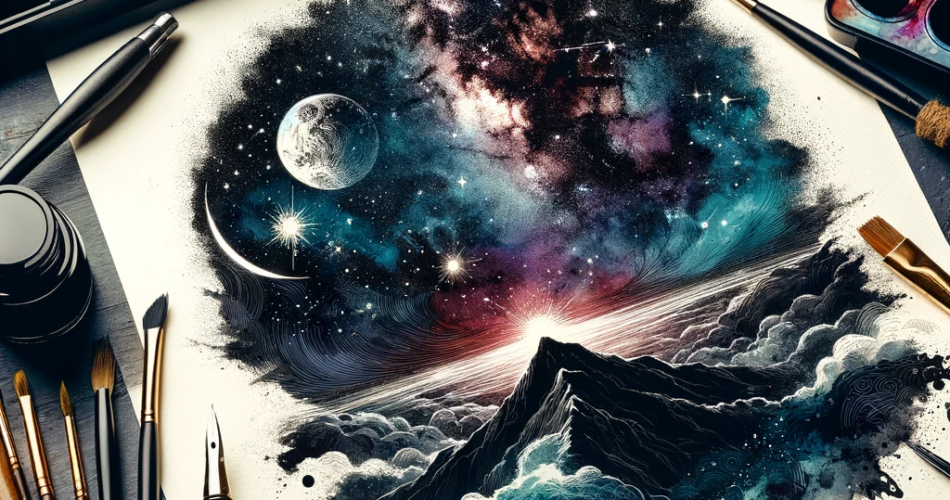Table of Contents
Introduction
Inking a night sky offers an opportunity to capture the vastness and beauty of the cosmos.
This guide will walk you through the process of creating a mesmerizing night sky with ink, perfect for anyone fascinated by the wonders of the universe.
Key Takeaways:
- Techniques for creating a realistic night sky in ink.
- Selecting the right tools for capturing celestial elements.
- Tips for depicting stars, the moon, and galaxies.
- Enhancing your night sky illustrations with depth and contrast.
Choosing Your Tools
1. Selecting Inking Tools:
Brush pens are ideal for creating soft, nebulous backgrounds, while fine liners can add precision to stars and celestial bodies.
2. Inks and Colors:
Use a palette of dark blues, purples, and blacks for the sky, with whites and yellows for stars and other celestial objects.
The Inking Process
1. Creating the Background:
Start with a wash of dark colors to set the base of your night sky. Layer different shades to create depth.
2. Adding Stars:
Use a fine liner or a white ink pen to dot stars. Vary their size and concentration for a more natural look.
3. Depicting the Moon and Planets:
If including the moon or planets, use a lighter shade to ink these, adding details like craters or rings.
4. Creating Galaxies:
For galaxies, use swirling motions with your brush and blend different colors to create a nebulous effect.
Enhancing Your Artwork
1. Adding Constellations:
You can ink in famous constellations to add interest and realism to your night sky.
2. Light and Shadow:
Pay attention to how light and shadow work in space to add realism. For example, the parts of the moon in shadow should be darker.
FAQs on How to Ink a Night Sky
Q: How can I make my night sky look more realistic?
A: Use references, vary the intensity of stars, and layer colors to create depth.
Q: What is the best way to ink stars so they look natural?
A: Use a stippling technique with varying sizes of dots and avoid uniform patterns.
Q: Can I mix mediums, like ink and watercolor, for a night sky?
A: Absolutely! Mixing mediums can add a unique texture and depth to your artwork.
Q: How do I create a glowing effect around the moon or stars?
A: Use a lighter ink around these objects and blend it outwards to create a soft, glowing effect.



